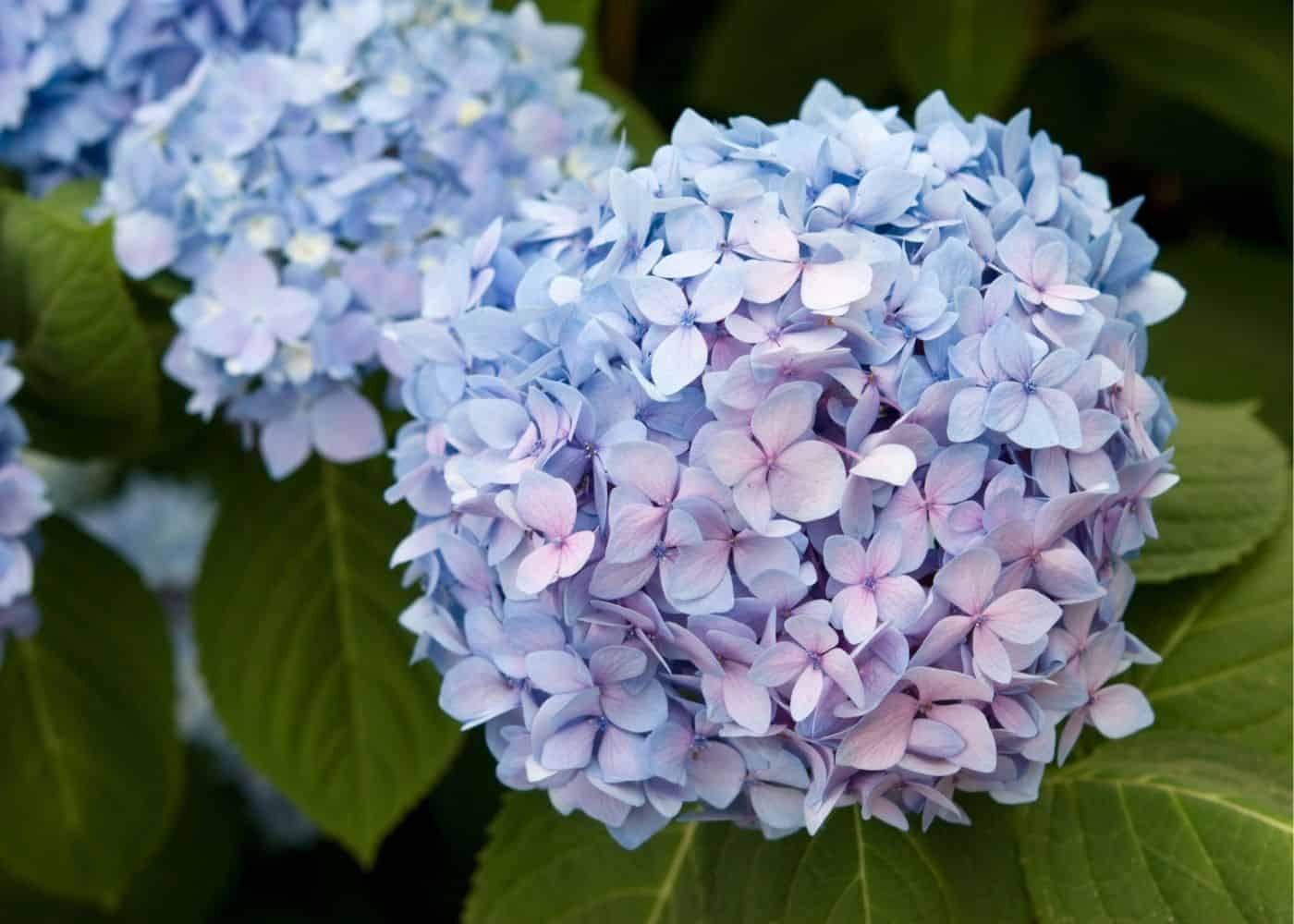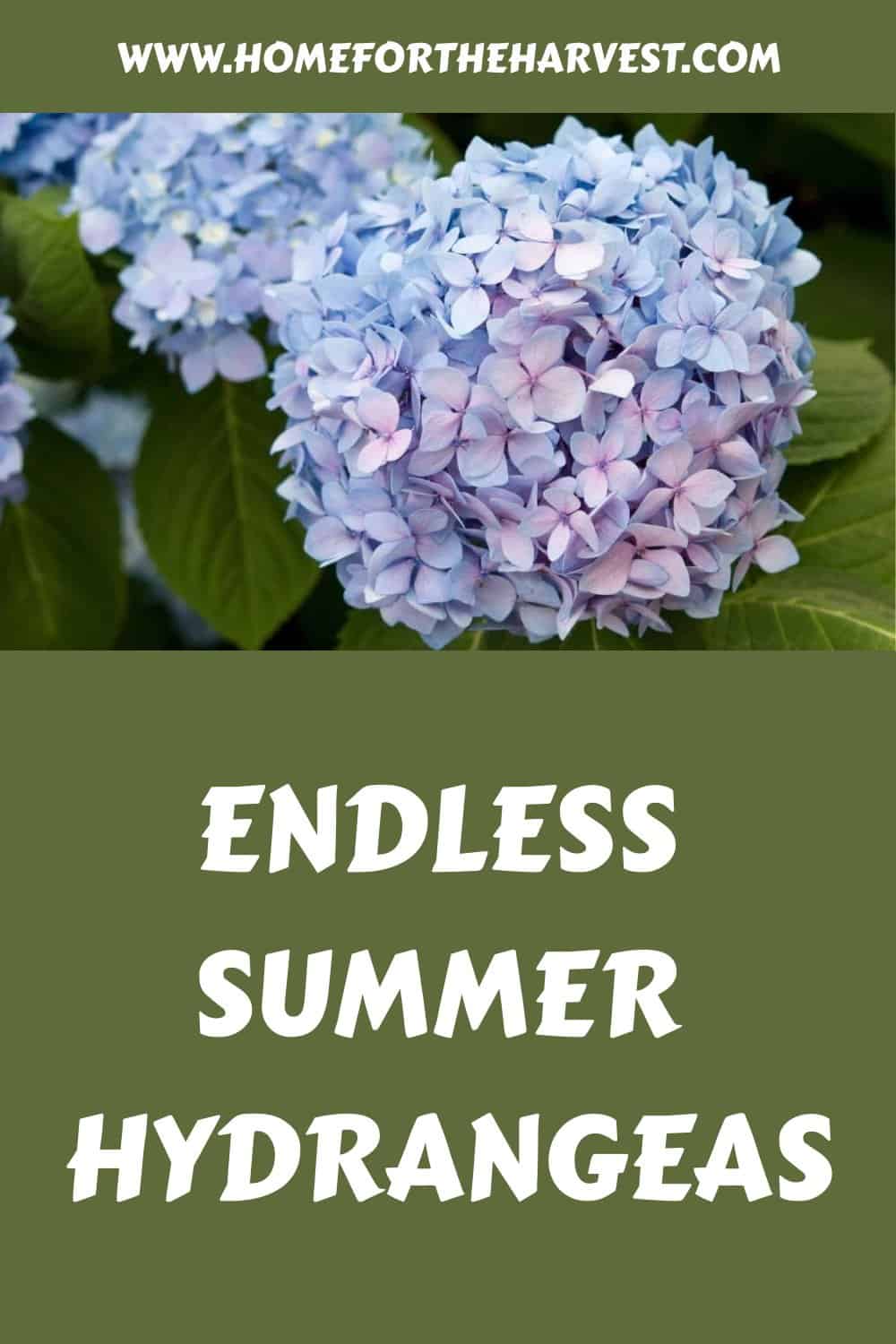Endless Summer hydrangea is a reblooming mophead-type hydrangea shrub known for its gorgeous flowers and ability to rebloom in mid-late summer. While other bigleaf hydrangeas bloom only on overwintered “old” wood, Endless Summer shrubs bloom on both old wood and fresh spring growth (“new” wood). Endless Summer hydrangeas are also known for their ability to flower in either pink or blue, depending on soil conditions and nutrient availability.
Endless Summer hydrangea basics
Endless Summer hydrangea (Hydrangea macrophylla ‘Bailmer’) is one of the most popular hydrangea varieties to grow. These beauties are known for their giant flowers, which can range in color from pink to lavender-blue (see this hydrangea color chart for details).
Endless Summer is also known for its ability to re-bloom throughout the summer, as this variety can flower on both overwintered branches and on freshly grown stems. Endless Summer hydrangeas typically bloom in late spring and then put on a second round of flowers in mid-late summer.
Endless Summer® Original Bigleaf Hydrangea is a cultivar of Hydrangea macrophylla, which is one of the most ornamental types of hydrangeas. Hydrangea macrophylla plants like Endless Summer are sometimes referred to as Bigleaf hydrangeas, mophead hydrangeas, or French hydrangeas. These varieties are grown as ornamental landscaping plants and also for their value as cut flower species.
In good growing conditions, Endless Summer shrubs reach a mature size of 3′-5′ tall and wide. They grow best in partial sun to partial shade, preferring direct sunlight in the morning and shade in the afternoon.
Endless Summer plants can be grown in Zones 4-9. Overly cold temperatures may harm overwintering flower buds in the colder areas (typically Zones 4-5), and these shrubs may only bloom on new wood in those areas (not on overwintered branches). Afternoon shade is particularly important in hotter growing areas (Zones 7-9), as this variety is easily scorched or stressed by overly hot conditions.
“Endless Summer hydrangeas are easy to grow as long as they have good soil and plenty of moisture, and their resistance to powdery mildew is also an asset. They are best in partial shade as they will scorch if they receive too much sun.”
Hydrangeas: Beautiful Varieties for Home and Garden, by Naomi Slade
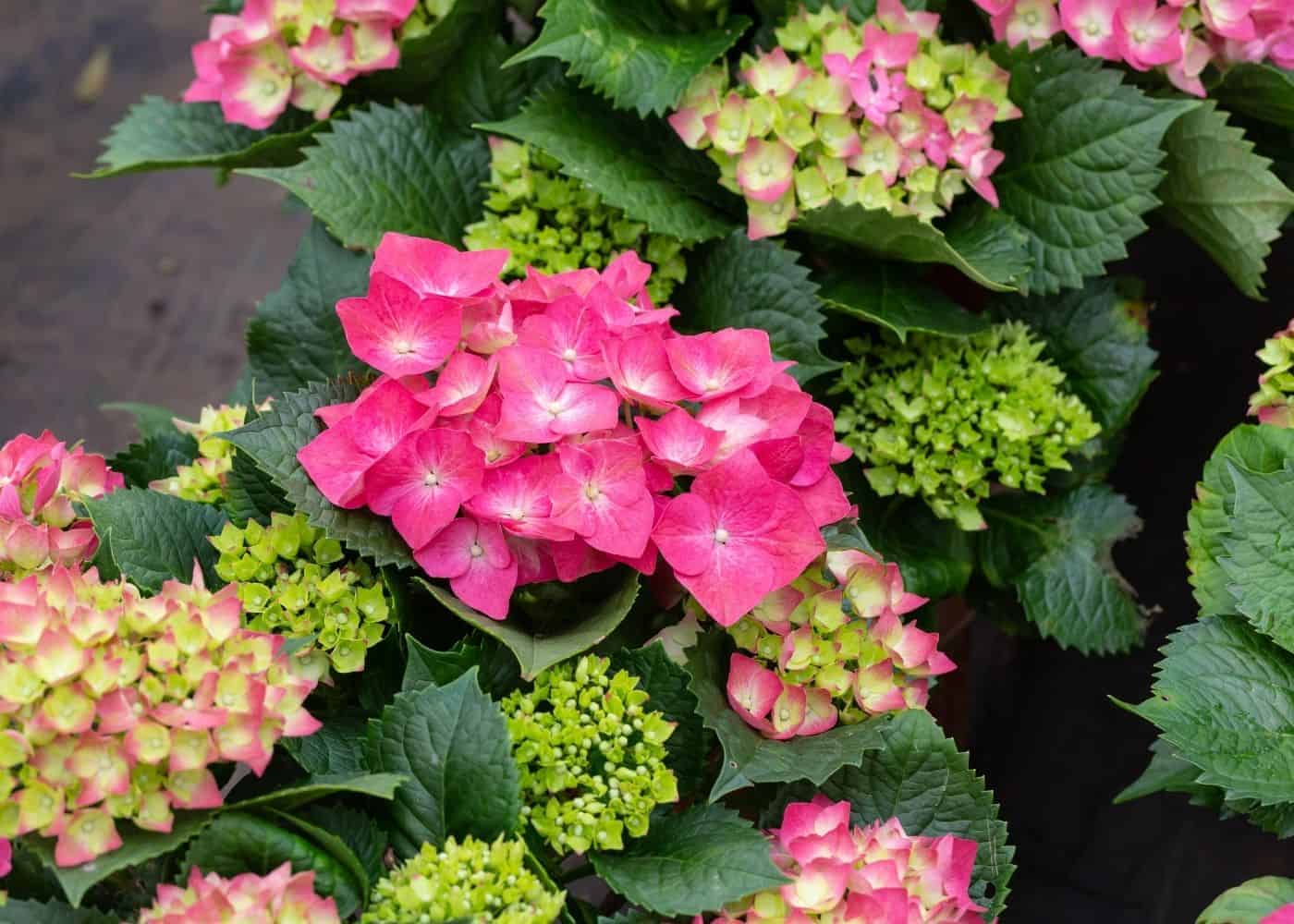
Planting Endless Summer hydrangea
Early spring and fall are the best times to plant hydrangeas. They have a relatively long growing season, producing flowers from June to September. They should ideally be planted before the blooming season so they can establish a stable root system. Fall-planted hydrangeas tend to do quite well.
Where you plant your hydrangeas is hugely important to bloom production. Look for areas that get three to four hours of sun in the morning but are in the shade or filtered light in the afternoon. If you live in a Northern growing zone, such as Zones 4-5, your hydrangeas should be able to handle more sun than those that live in Southern growing zones with more intense sunlight. These folks should be especially mindful to ensure their hydrangeas get shade in the afternoon.
Here’s how to plant your new hydrangea:
- Assuming you are planting potted hydrangeas, go to the site where you want to start your hydrangea garden and dig a hole about twice as wide as the pot size, but no deeper than the soil in the planter. If you intend to plant multiple hydrangeas, dig a hole for each.
- Remove the plant from the pot. Loosen the outer roots if they are tightly packed. This will encourage the roots to expand and grow more quickly.
- Check the soil levels to ensure you plant the hydrangea at the same level as the surrounding soil.
- Backfill the hole carefully with the soil that came out of the hole. Tamp the soil down gently.
- Water the area thoroughly until the plant and surrounding soil are saturated. Check for any signs of poor drainage, such as lasting ponding surface water.
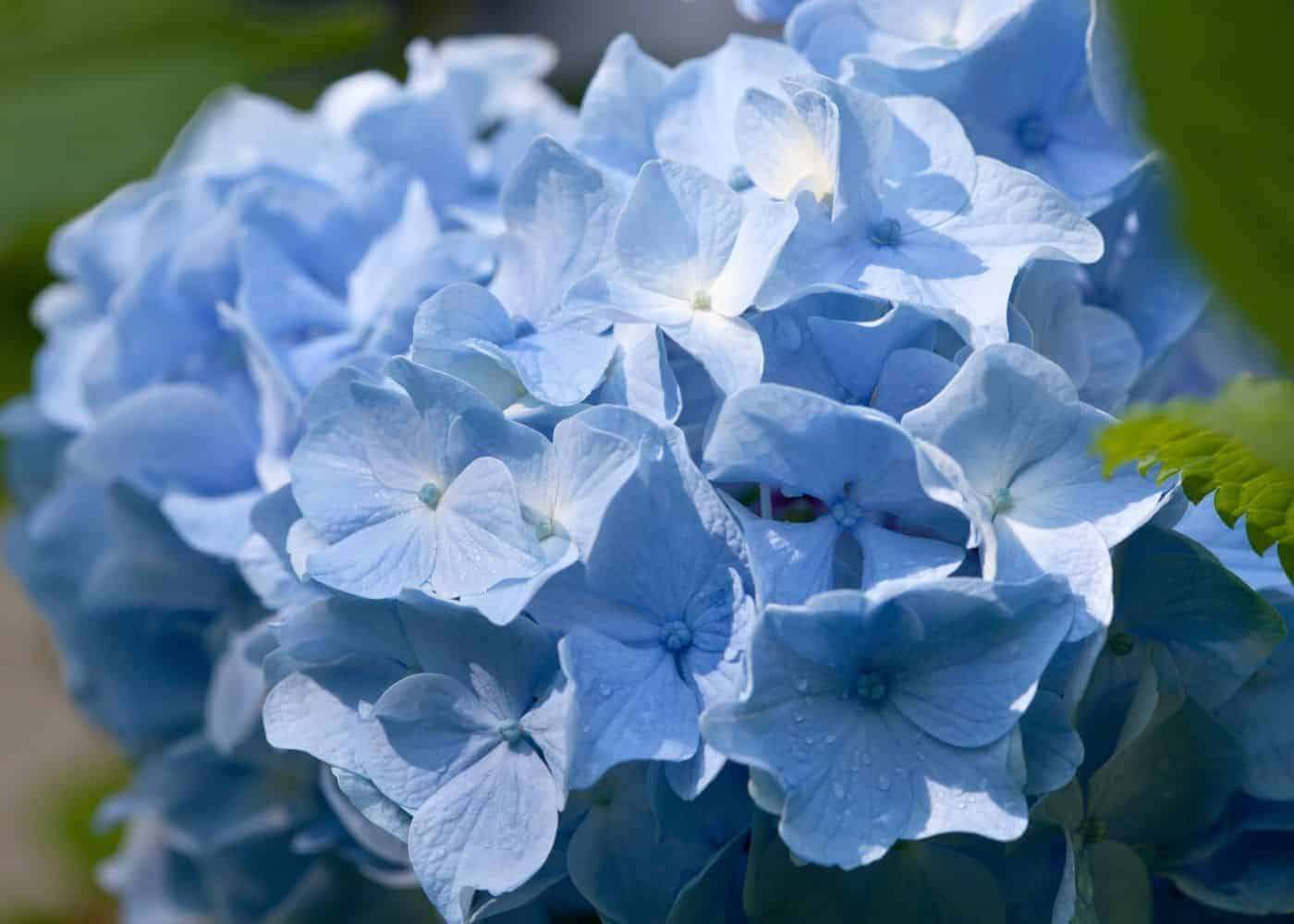
Soil for Endless Summer hydrangea
Endless Summer Hydrangeas grow best in soil that drains well and has an acidic or neutral pH level. This hydrangea requires lots of water but does not want to be left in stagnant, ponded water. The roots require air just as much as they require water. Look for sandy loam soil that can hold a nice balance of water and air pockets, leading to soil that is moist but not muddy.
Changing the color of flowers
Endless Summer is one of the hydrangea varieties that can bloom in different colors depending on soil conditions. The flower color is affected by soil pH, with acidic soils producing blue flowers and neutral-alkaline soils producing pink flowers.
The soil pH should be quite acidic for blue flowers on an Endless Summer Hydrangea. Usually, this is in the range of 4.5-5.0 (or close). A garden soil test can tell you the pH of your existing soil. The soil can then be acidified with a soil acidifier product, which is most commonly made from elemental sulfur and gypsum. These products are typically applied directly to the soil around the plant every couple of months until the flowers bloom in the desired shade.
For pink hydrangea flowers, soil pH should be closer to neutral. Soil pH of 5.5-6.5 tends to produce more of a purple, while the truly pink flowers tend to occur around 7 – a neutral soil pH. While some gardeners have naturally neutral-pH soil, those with overly acidic soil generally amend the soil with lime to bring up the pH to get those pink hydrangea blooms. Use a product like garden lime (dolomite lime) to neutralize soil and encourage pink blooms. Lime is generally applied in spring and/or fall.
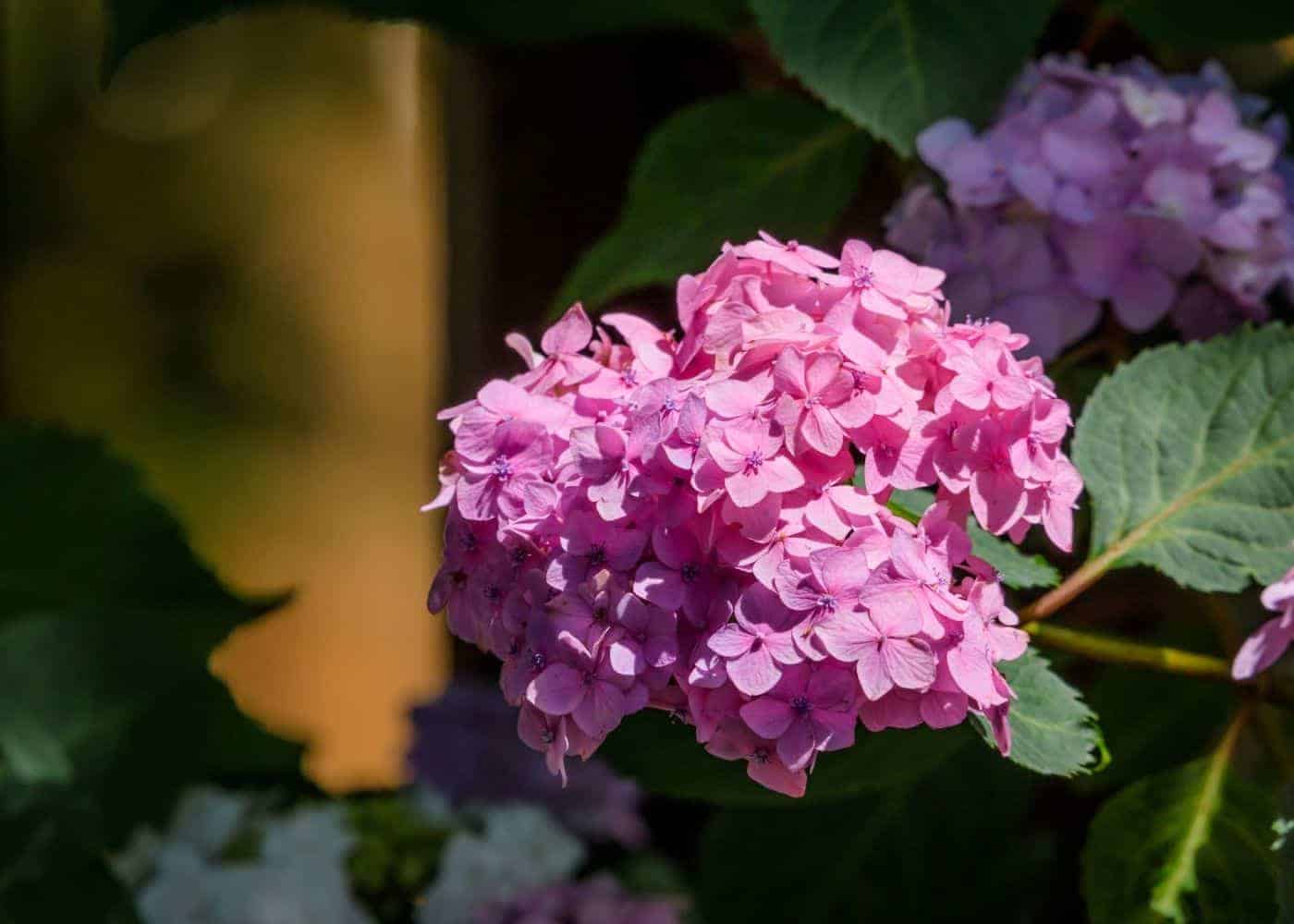
Sunlight requirements
Endless Summer Hydrangeas can tolerate about four hours of unfiltered, strong light per day. The morning sun is preferable to mid-day or afternoon sunlight.
The best planting spot in terms of sunlight for an Endless Summer Hydrangea is an area that gets direct sunlight in the morning but then receives either dappled or full shade in the afternoon. The afternoon shade is particularly important in climates with harsh sunlight in the hottest parts of the year. Endless Summer Hydrangeas that are stressed by intense heat will not flower as well as they would in more favorable conditions.
Watering requirements
Endless Summer and other mopheads require more water than some other common types of hydrangeas. They tend to grow best when soil is moist, but not fully saturated with water. The roots do best with consistent access to both water and air.
Newly-planted shrubs may need to be watered every couple of days when first planted. Container-grown hydrangeas may also need very frequent watering. Once the plants become established in the ground, watering can be decreased. That said, these are plants that grow best with lots of water!
The easiest way to water these hydrangeas is with a drip irrigation line down in the soil. This way, the plants can be watered automatically every couple of days (and the foliage is not dampened by overhead sprinkling).
Some common plant diseases like powdery mildew and bud blight can result when a plant sits too long in a moist environment. Overwatering can also inhibit flowering. Be sure to check that the soil is draining out excess water easily (and that no water is ponding on the surface). To avoid fungus and other diseases, it is best to water these plants at the base. Stick your fingers in the soil to test it for moistness. It should feel moist but not water-logged.
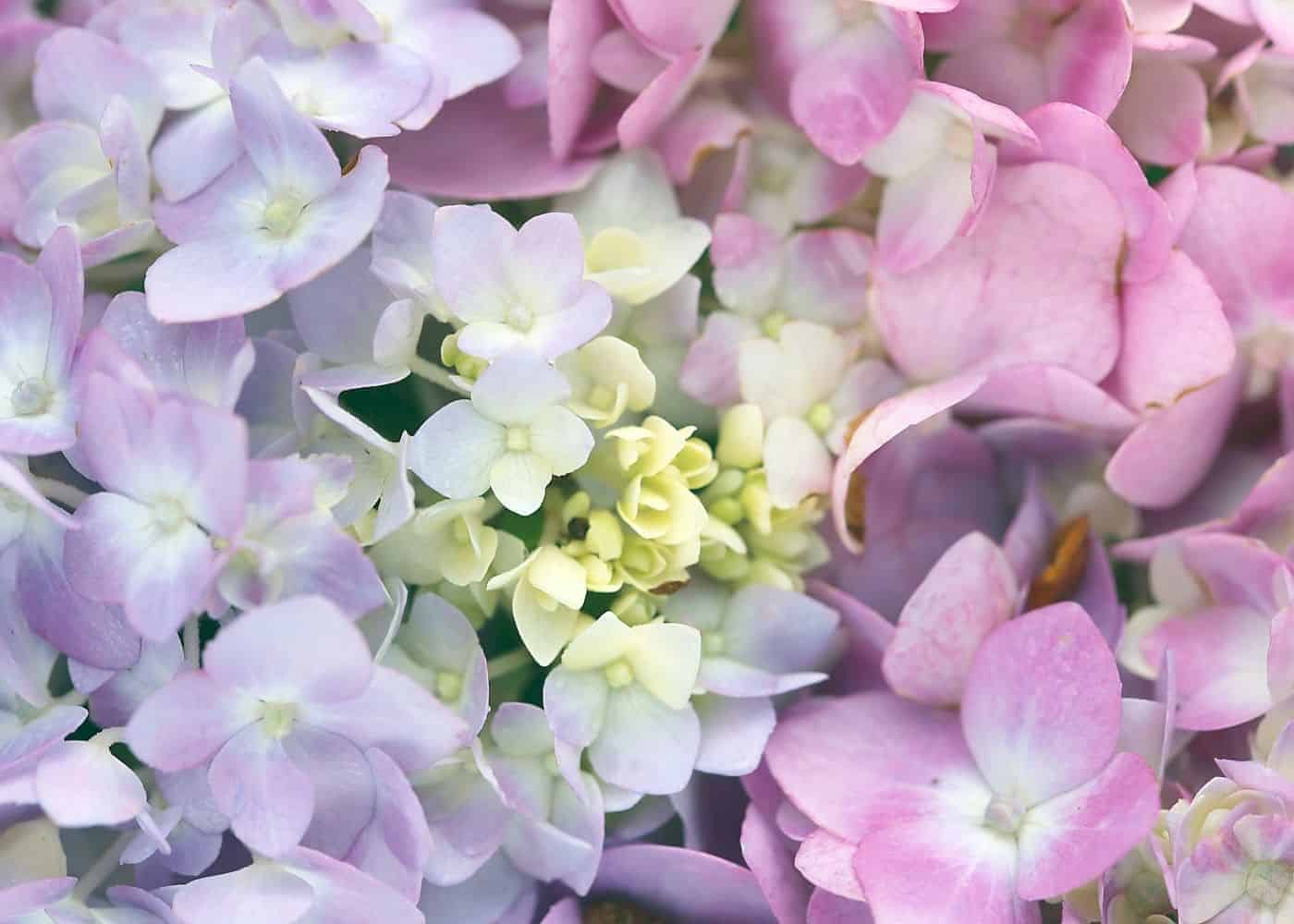
Ideal growing climate
The Endless Summer hydrangea grows best in growing zones 4-9, making it more cold-hardy than most other hydrangea varieties and acceptable for most gardens in North America. That said, the overwintering buds may not survive in colder zones (zones 4-5), meaning that the late-spring flowering period will not occur, and the plant will only flower on new wood in mid-late summer.
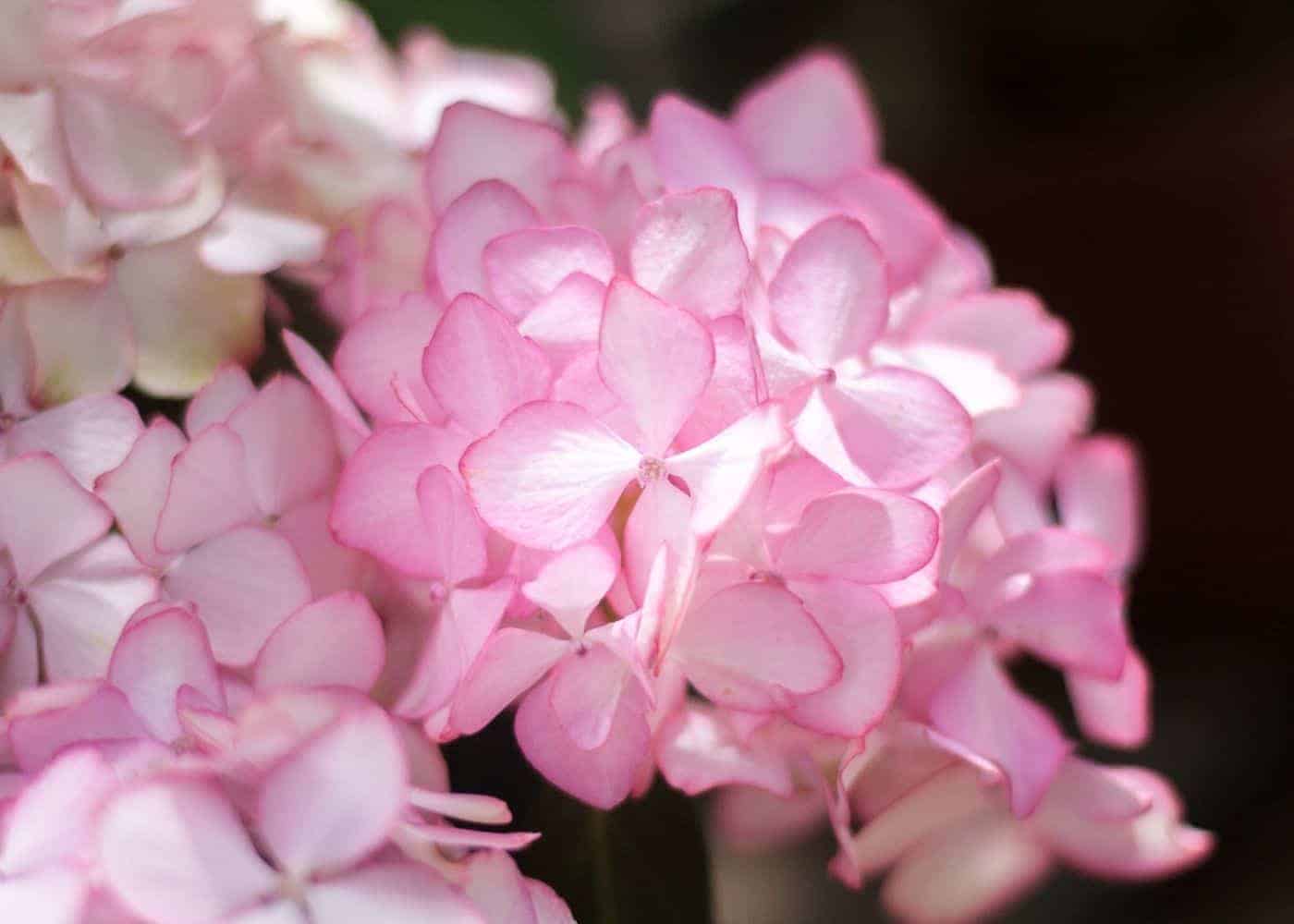
Fertilizing Endless Summer hydrangea plants
Endless Summer plants are generally fed once or twice per year. They can be fed in early spring just as growth starts to get going, and they can be fed an additional time before the reblooming period begins. Avoid feeding in late summer or fall to encourage the plant to move towards dormancy rather than encourage frost-tender growth to develop right before cold temperatures arrive.
Many slow-release natural fertilizers are ideal for these flowering shrubs. Ideally, the type of fertilizer you use should reflect the desired color of the flowers. The flower takes on a blueish hue when grown in more acidic soil and a pink hue when grown in neutral-alkaline soil, so your fertilizer should reflect this difference.
Be sure to read the instructions on the specific fertilizer you choose, as application amounts and frequencies vary between brands. Overfertilizing can inhibit flowering rather than encourage blooms.
Pruning Endless Summer hydrangeas
Endless Summer hydrangeas should be pruned in the summer after they finish flowering. Try to time the pruning right after the late spring blooms start to look tired. The pruning cuts will then occur before the re-blooming period begins in mid-late summer, allowing those blooms to peek up through the foliage and put on another show.
Try not to prune these hydrangeas after mid-summer. These plants grow quite a few flower buds in late summer, which then overwinter on the stems. By growing the flower buds in the fall, this plant is able to bloom quite early in the summer. Any pruning between late summer and late spring will potentially remove quite a few of these flower buds. That said, any dead, damaged, diseased, or dying stems should be removed as soon as observed. You can also deadhead the late-summer flowers in the fall (but be careful not to trim off the remaining flower buds).
To prune an Endless Summer hydrangea plant, follow these steps:
- Remove any stems that are dead, damaged, diseased, or dying. Take them off right at the soil line to allow for healthy growth.
- Remove old blossoms. These will generally be the blossoms from the first big flush of late-spring blooms. Take in the appearance of your plant. You can clip it just below the flower head if it looks brown, spotty, and wilted. It is not necessary to do this unless you are trying to improve the appearance of your hydrangeas or make more space for new buds.
- Remove old canes. Even though old canes can generate new blooms every season, the longer they go, the smaller blooms they produce. If old canes have been flowering for several years, it may be time to give them a trim. Prune these right down at the soil line. Removing old stems allows room for new ones to grow up and take their place with fresh wood.
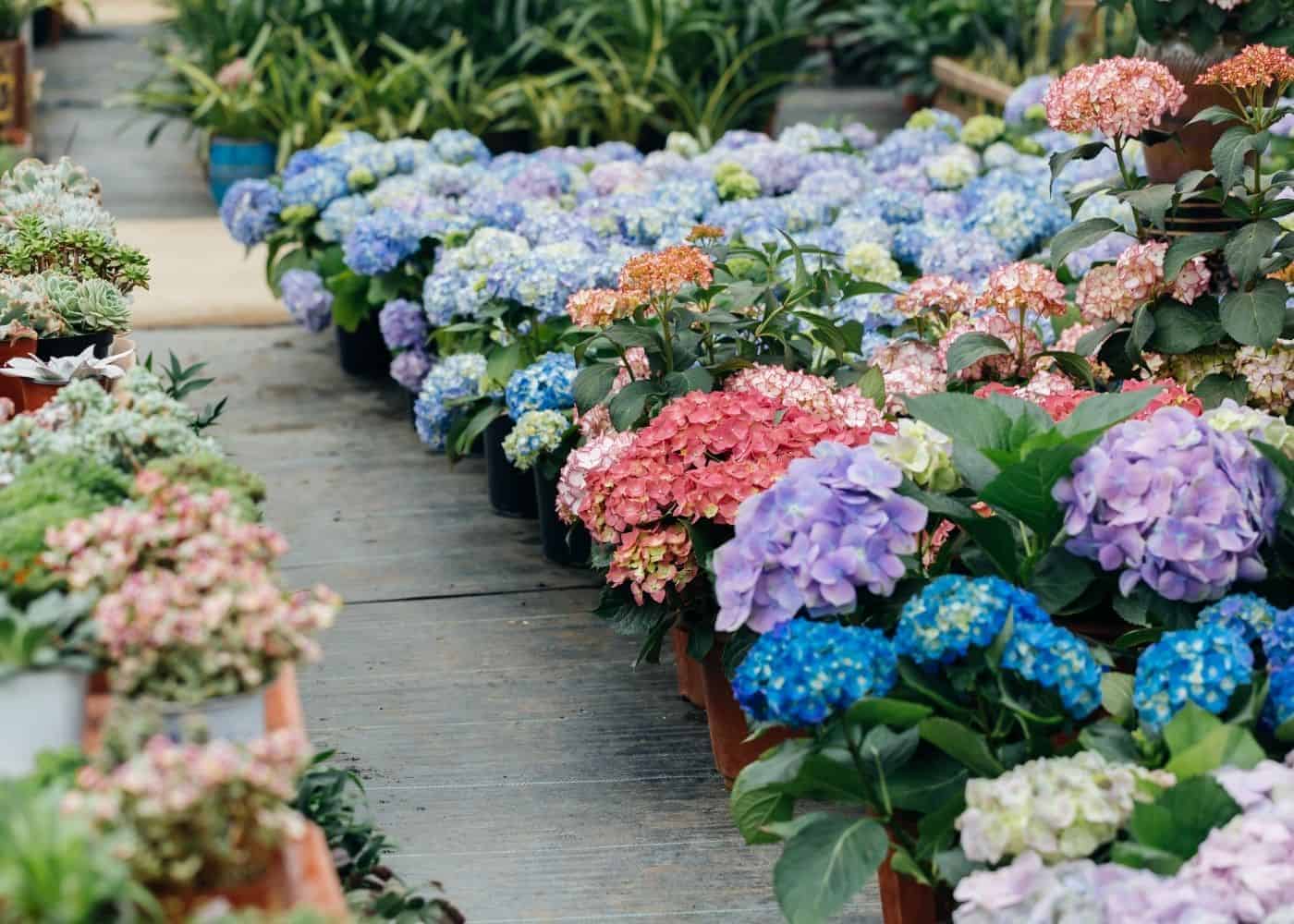
Common pests
Hydrangeas can be attractive to pests, including aphids, spider mites, slugs, and Japanese beetles. Fortunately, recognizing them is fairly straightforward. These pests are all possible to conquer if you have the right tools.
If you notice ants on the petals of your hydrangea, this is a sign that there may be aphids, as ants are attracted to the residue left behind by aphids. Slugs come out at nighttime and are fairly easy to recognize and remove manually with a flashlight and a pair of rubber gloves. Seeing wisps of webbing underneath the petals is one sign of spider mites. Leaves that are ripped and torn might be an indication that beetles are eating your hydrangeas.
It is difficult to predict when these pests will arise, but there are several ways of dealing with them. One is to wash the leaves and stems down with soapy water. Another is to treat the whole plant with an organic insecticide.
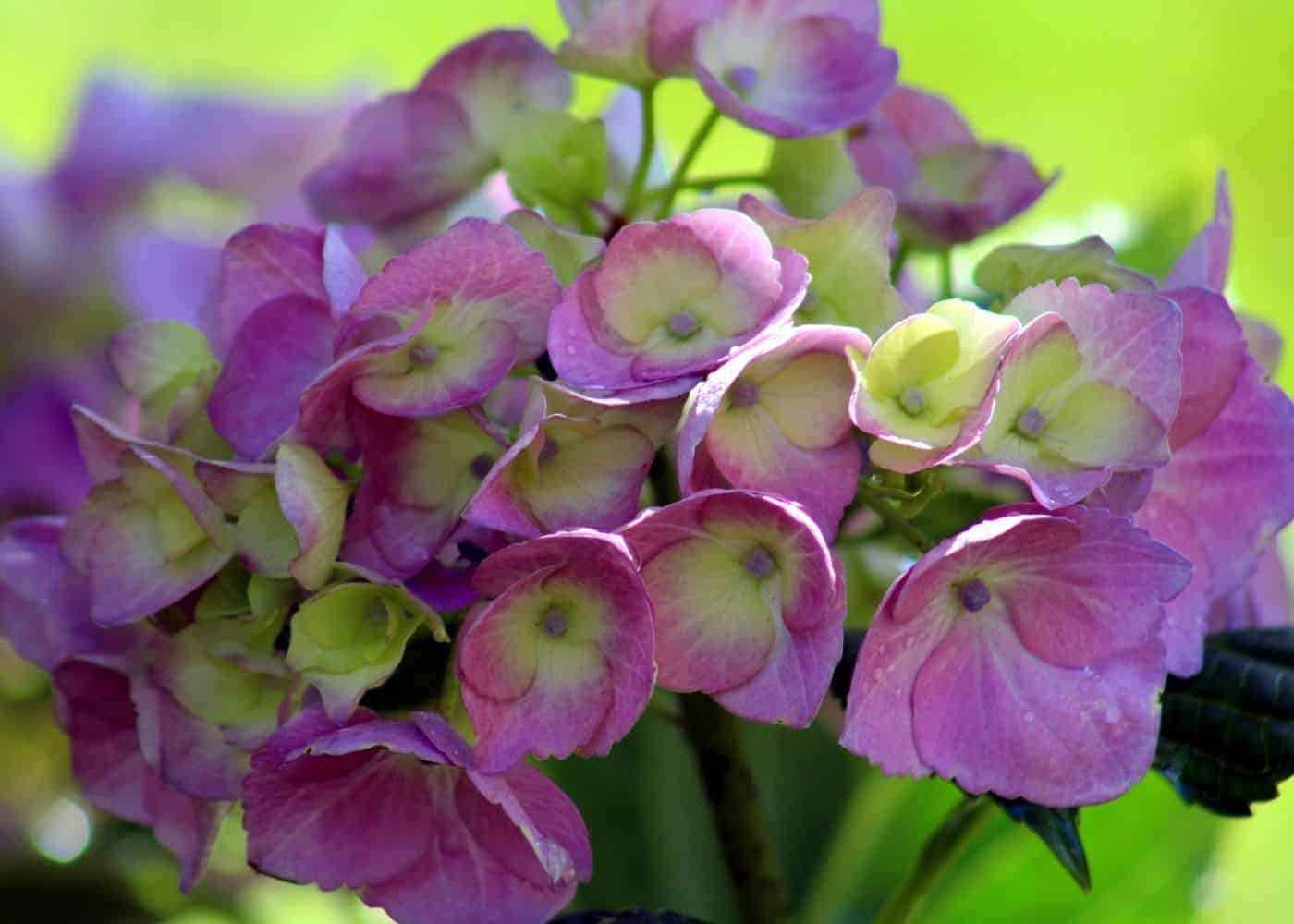
Diseases & other problems
While Endless Summer hydrangeas are more resistant to disease than some similar varieties, they are still susceptible to several plant diseases, including powdery mildew, bud blight, leaf spot, and bacterial wilt. If the petals of your Endless Summer Hydrangea are covered in grey fuzz, spots, and mold or have lost their usual vibrancy, chances are that your plant has contracted one of these diseases. Most of these are caused or exacerbated by overwatering, too much shade, or too little ventilation within your plant.
One way to treat disease is to decrease watering and increase air circulation around the plant. Sometimes it’s better to transplant it to an area with better soil drainage or more air movement.
One of the most common growing complaints is a lack of blooming caused by over-pruning your plants. In cold zones, these plants can sometimes be more like endless disappointment than endless summer. But even in warmer zones, lack of blooming can be a problem. Because these buds like to bloom on top of old growth, pruning them too frequently will diminish growth and create smaller blooms. Give the wood time to regenerate for a few seasons before pruning, and avoid pruning if the previous season produced large and healthy blooms: chances are, it will in the next year, too.


